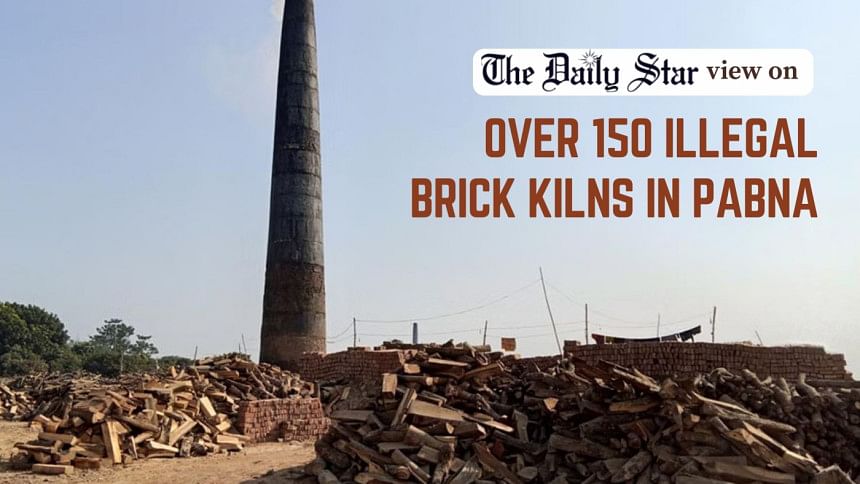Crack down on illegal brick kilns

The news of unchecked expansion of illegal brick kilns across nine upazilas of Pabna district once again highlights the authorities' persistent failure to address this issue. According to a report by this daily, more than 150 illegal brick kilns are operating in the district, many of which burn wood instead of coal, exacerbating pollution levels in the region.
A recent investigation by the Department of Environment (DoE) identified 92 kilns in four upazilas using wood in 120-foot chimneys—39 in Pabna Sadar, 46 in Ishwardi, six in Faridpur, and one in Santhia. Among them, 13 have even set up illegal sawmills to ensure a steady supply of timber. Despite clear prohibitions against using wood as fuel under brick manufacturing regulations, most kilns continue to source large amounts of illegally logged timber without permission from the forest department, according to Pabna's district forest office.
While the assistant director of the DoE in Pabna has stated that a report has been sent to the higher authorities in this regard, no significant action appears to have been taken. Meanwhile, the district administration claims to be conducting mobile court drives, but these efforts have been woefully insufficient, as evidenced by the sheer number of illegal brick kilns still in operation and their persistent environmental degradation. According to the district administration, there were 165 registered brick kilns as of 2020, but only 24 have renewed their licenses. What about the rest? How have they managed to operate illegally without consequences?
This is not an isolated issue. Last month, this newspaper reported that 984 kilns in Rangpur division were operating in violation of regulations. Prior to that, similar concerns were raised about Brahmanbaria, too. All of this points to the urgent need for the government to intensify its efforts to shut down illegal operations. Throughout this winter, Dhaka has consistently ranked among the most polluted cities in the world, and unregulated brick kilns are a major contributor to this sorry state of affairs—not just in the capital, but across the country.
That said, permanently eliminating such kilns requires viable alternatives. Fortunately, solutions already exist, including thermal blocks, compressed stabilised earth blocks, and sand-cement hollow blocks. The government, in collaboration with the stakeholders, must develop a clear, enforceable strategy to transition away from traditional brick kilns toward these more environmentally friendly alternatives. Otherwise, this menace will continue to persist at the cost of our environment and public health.

 For all latest news, follow The Daily Star's Google News channel.
For all latest news, follow The Daily Star's Google News channel. 










Comments